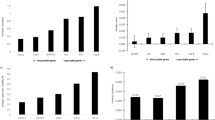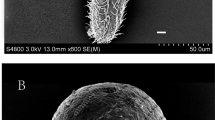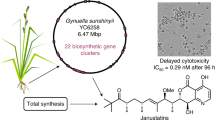Abstract
The Japanese marine sponge Discodermia calyx contains a major cytotoxic compound, calyculin A, which exhibits selective inhibition of protein phosphatases 1 and 2A. It has long been used as a chemical tool to evaluate intracellular signal transduction regulated by reversible protein phosphorylation. We describe the identification of the biosynthetic gene cluster of calyculin A by a metagenome mining approach. Single-cell analysis revealed that the gene cluster originates in the symbiont bacterium 'Candidatus Entotheonella' sp. A phosphotransferase encoded in the gene cluster deactivated calyculin A to produce a newly discovered diphosphate, which was actually the biosynthetic end product. The diphosphate had been previously overlooked because of the enzymatic dephosphorylation that occurred in response to sponge tissue disruption. Our work presents what is to our knowledge the first evidence for the biosynthetic process of calyculin A along with a notable phosphorylation-dephosphorylation mechanism to regulate toxicity, suggesting activated chemical defense in the most primitive of all multicellular animals.
This is a preview of subscription content, access via your institution
Access options
Subscribe to this journal
Receive 12 print issues and online access
$259.00 per year
only $21.58 per issue
Buy this article
- Purchase on Springer Link
- Instant access to full article PDF
Prices may be subject to local taxes which are calculated during checkout






Similar content being viewed by others
References
Döderlein, L. Studien an japanischen Lithistiden. Zeitschr. f. wiss. Zool. 40, 62–104 (1883).
Kato, Y. et al. Calyculin A, a novel antitumor metabolite from the marine sponge Discodermia calyx. J. Am. Chem. Soc. 108, 2780–2781 (1986).
Ishihara, H. et al. Calyculin A and okadaic acid: inhibitors of protein phosphatase activity. Biochem. Biophys. Res. Commun. 159, 871–877 (1989).
Wakimoto, T., Matsunaga, S., Takai, A. & Fusetani, N. Insight into binding of calyculin A to protein phosphatase 1: isolation of hemicalyculin A and chemical transformation of calyculin A. Chem. Biol. 9, 309–319 (2002).
Kita, A. et al. Crystal structure of the complex between calyculin A and the catalytic subunit of protein phosphatase 1. Structure 10, 715–724 (2002).
Fagerholm, A.E., Habrant, D. & Koskinen, A.M.P. Calyculins and related marine natural products as serine-threonine protein phosphatase PP1 and PP2A inhibitors and total syntheses of calyculin A, B, and C. Mar. Drugs 8, 122–172 (2010).
Bewley, C.A. & Faulkner, D.J. Lithistid sponges: star performers or hosts to the stars. Angew. Chem. Int. Ed. 37, 2162–2178 (1998).
Dumdei, E.J., Blunt, J.W., Munro, M.H.G. & Pannell, L.K. Isolation of calyculins, calyculinamides, and swinholide H from the New Zealand deep-water marine sponge Lamellomorpha strongylata. J. Org. Chem. 62, 2636–2639 (1997).
Fu, X., Schmitz, F.J., Kelly-Borges, M., McCready, T.L. & Holmes, C.F.B. Clavosines A–C from the marine sponge Myriastra clavosa: potent cytotoxins and inhibitors of protein phosphatases 1 and 2A. J. Org. Chem. 63, 7957–7963 (1998).
Kehraus, S., König, G.M. & Wright, A.D. A new cytotoxic calyculinamide derivative, geometricin A, from the Australian sponge Luffariella geometrica. J. Nat. Prod. 65, 1056–1058 (2002).
Edrada, R.A. et al. Swinhoeiamide A, a new highly active calyculin derivative from the marine sponge Theonella swinhoei. J. Nat. Prod. 65, 1168–1172 (2002).
Schirmer, A. et al. Metagenomic analysis reveals diverse polyketide synthase gene clusters in microorganisms associated with the marine sponge Discodermia dissolute. Appl. Environ. Microbiol. 71, 4840–4849 (2005).
Paul, V.J., Arthur, K.E., Ritson-Williams, R., Ross, C. & Sharp, K. Chemical defenses: from compounds to communities. Biol. Bull. 213, 226–251 (2007).
Piel, J. Biosynthesis of polyketides by trans-AT polyketide synthases. Nat. Prod. Rep. 27, 996–1047 (2010).
Hrvatin, S. & Piel, J. Rapid isolation of rare clones from highly complex DNA libraries by PCR analysis of liquid gel pools. J. Microbiol. Methods 68, 434–436 (2007).
Calderone, C.T., Kowtoniuk, W.E., Kelleher, N.L., Walsh, C.T. & Dorrestein, P.C. Convergence of isoprene and polyketide biosynthetic machinery: Isoprenyl-S-carrier proteins in the pksX pathway of Bacillus subtilis. Proc. Natl. Acad. Sci. USA 103, 8977–8982 (2006).
Stachelhaus, T., Mootz, H.D. & Marahiel, M.A. The specificity-conferring code of adenylation domains in nonribosomal peptide synthetases. Chem. Biol. 6, 493–505 (1999).
Kato, Y., Fusetani, N., Matsunaga, S., Hashimoto, K. & Koseki, K. Isolation and structure elucidation of calyculins B, C, and D, novel antitumor metabolites, from the marine sponge Discodermia calyx. J. Org. Chem. 53, 3930–3932 (1988).
Kwan, D.H. & Leadlay, P.F. Mutagenesis of a modular polyketide synthase enoylreductase domain reveals insights into catalysis and stereospecificity. ACS Chem. Biol. 5, 829–838 (2010).
Piel, J. et al. Antitumor polyketide biosynthesis by an uncultivated bacterial symbiont of the marine sponge Theonella swinhoei. Proc. Natl. Acad. Sci. USA 101, 16222–16227 (2004).
Tang, M.-C., He, H.-Y., Zhang, F. & Tang, G.-L. Baeyer-Villiger oxidation of acyl carrier protein–tethered thioester to acyl carrier protein-linked thiocarbonate catalyzed by a monooxygenase domain in FR901464 biosynthesis. ACS Catal. 3, 444–447 (2013).
Julien, B., Tian, Z.-Q., Reid, R. & Reeves, C.D. Analysis of the ambruticin and jerangolid gene clusters of Sorangium cellulosum reveals unusual mechanisms of polyketide biosynthesis. Chem. Biol. 13, 1277–1286 (2006).
Teufel, R. et al. Flavin-mediated dual oxidation controls an enzymatic Favorskii-type rearrangement. Nature 503, 552–556 (2013).
Reid, R. et al. A model of structure and catalysis for ketoreductase domains in modular polyketide synthases. Biochemistry 42, 72–79 (2003).
Haines, A.S. et al. A conserved motif flags acyl carrier proteins for β-branching in polyketide synthesis. Nat. Chem. Biol. 9, 685–692 (2013).
Nguyen, T. et al. Exploiting the mosaic structure of trans-acyltransferase polyketide synthases for natural product discovery and pathway dissection. Nat. Biotechnol. 26, 225–233 (2008).
Butcher, R.A. et al. The identification of bacillaene, the product of the PksX megacomplex in Bacillus subtilis. Proc. Natl. Acad. Sci. USA 104, 1506–1509 (2007).
Kusebauch, B., Busch, B., Scherlach, K., Roth, M. & Hertweck, C. Functionally distinct modules operate two consecutive α,β→β,γ double-bond shifts in the rhizoxin polyketide assembly line. Angew. Chem. Int. Ed. 49, 1460–1464 (2010).
Moldenhauer, J. et al. The final steps of bacillaene biosynthesis in Bacillus amyloliquefaciens FZB42: direct evidence for β,γ dehydration by a trans-acyltransferase polyketide synthase. Angew. Chem. Int. Ed. 49, 1465–1467 (2010).
Müller, I. et al. A unique mechanism for methyl ester formation via an amide intermediate found in myxobacteria. ChemBioChem 7, 1197–1205 (2006).
Matsunaga, S., Wakimoto, T. & Fusetani, N. Isolation of four new calyculins from the marine sponge Discodermia calyx. J. Org. Chem. 62, 2640–2642 (1997).
Olano, C. et al. Biosynthesis of the angiogenesis inhibitor borrelidin by Streptomyces parvulus Tü4055: insights into nitrile formation. Mol. Microbiol. 52, 1745–1756 (2004).
Matsunaga, S., Wakimoto, T., Fusetani, N. & Suganuma, M. Isolation of dephosphonocalyculin A from the marine sponge, Discodermia calyx. Tetrahedr. Lett. 38, 3763–3764 (1997).
Schmidt, E.W., Obraztsova, A.Y., Davidson, S.K., Faulkner, D.J. & Haygood, M.G. Identification of the antifungal peptide-containing symbiont of the marine sponge Theonella swinhoei as a novel δ-proteobacterium, “Candidatus Entotheonella palauensis”. Mar. Biol. 136, 969–977 (2000).
Pernthaler, A., Pernthaler, J. & Amann, R. Fluorescence in situ hybridization and catalyzed reporter deposition for the identification of marine bacteria. Appl. Environ. Microbiol. 68, 3094–3101 (2002).
Kimura, M. et al. Calyxamides A and B, cytotoxic cyclic peptides from the marine sponge Discodermia calyx. J. Nat. Prod. 75, 290–294 (2012).
Wilson, M.C. et al. Discovery of an environmental bacterial taxon with a large and distinct metabolic repertoire. Nature 506, 58–62 (2014).
Paul, V.J. & Van Alstyne, K.L. Activation of chemical defenses in the tropical green algae Halimeda spp. J. Exp. Mar. Biol. Ecol. 160, 191–203 (1992).
Freeman, M.F. et al. Metagenome mining reveals polytheonamides as posttranslationally modified ribosomal peptides. Science 338, 387–390 (2012).
Kaasalainen, U. et al. Cyanobacteria produce a high variety of hepatotoxic peptides in lichen symbiosis. Proc. Natl. Acad. Sci. USA 109, 5886–5891 (2012).
Wiens, M. et al. Okadaic acid: a potential defense molecule for the sponge Suberites domuncula. Mar. Biol. 142, 213–223 (2003).
Konoki, K. et al. Binding of diarrheic shellfish poisoning toxins to okadaic acid binding proteins purified from the sponge Halichondria okadai. Bioorg. Med. Chem. 18, 7607–7610 (2010).
Shakya, T. et al. A small molecule discrimination map of the antibiotic resistance kinome. Chem. Biol. 18, 1591–1601 (2011).
Wittstock, U. & Gershenzon, J. Constitutive plant toxins and their role in defense against herbivores and pathogens. Curr. Opin. Plant Biol. 5, 300–307 (2002).
Wolfe, G.V., Steinke, M. & Kirst, G.O. Grazing-activated chemical defence in a unicellular marine alga. Nature 387, 894–897 (1997).
Teeyapant, R. & Proksch, R. Biotransformation of brominated compounds in the marine sponge Verongia aerophoba—evidence for an induced chemical defense? Naturwissenschaften 80, 369–370 (1993).
Thoms, C. & Schupp, P.J. Activated chemical defense in marine sponges—a case study on Aplysinella rhax. J. Chem. Ecol. 34, 1242–1252 (2008).
Fieseler, L. et al. Widespread occurrence and genomic context of unusually small polyketide synthase genes in microbial consortia associated with marine sponges. Environ. Microbiol. 8, 921–927 (2004).
Beyer, S., Kunze, B., Silakowski, B. & Müller, R. Metabolic diversity in myxobacteria: identification of the myxalamid and the stigmatellin biosynthetic gene cluster of Stigmatella aurantiaca Sg a15 and a combined polyketide-(poly)peptide gene cluster from the epothilone producing strain Sorangium cellulosum So ce90. Biochim. Biophys. Acta 1445, 185–195 (1999).
Ginolhac, A. et al. Phylogenetic analysis of polyketide synthase I domains from soil metagenomic libraries allows selection of promising clones. Appl. Environ. Microbiol. 70, 5522–5527 (2004).
Moffitt, M.C. & Neilan, B.A. Evolutionary affiliations within the superfamily of ketosynthases reflect complex pathway associations. J. Mol. Evol. 56, 446–457 (2003).
He, R. et al. Porphyrins from a metagenomic library of the marine sponge Discodermia calyx. Mol. Biosyst. 8, 2334–2338 (2012).
Ayuso-Sacido, A. & Genilloud, O. New PCR primers for the screening of NRPS and PKS-I systems in actinomycetes: detection and distribution of these biosynthetic gene sequences in major taxonomic groups. Microb. Ecol. 49, 10–24 (2005).
Schmieder, R., Lim, Y.W., Rohwer, F. & Edwards, R. TagCleaner: identification and removal of tag sequences from genomic and metagenomic datasets. BMC Bioinformatics 11, 341–354 (2010).
Simpson, J.T. et al. ABySS: a parallel assembler for short read sequence data. Genome Res. 19, 1117–1123 (2009).
Huang, X., Wang, J., Aluru, S., Yang, S.-P. & Hiller, L. PCAP: a whole-genome assembly program. Genome Res. 13, 2164–2170 (2003).
Ishikawa, J. & Hotta, K. FramePlot: a new implementation of the Frame analysis for predicting protein-coding regions in bacterial DNA with a high G+C content. FEMS Microbiol. Lett. 174, 251–253 (1999).
Delcher, A.L., Harmon, D., Kasif, S., White, O. & Salzberg, S.L. Improved microbial gene identification with GLIMMER. Nucleic Acids Res. 27, 4636–4641 (1999).
Bachmann, B.O. & Ravel, J. Methods for in silico prediction of microbial polyketide and nonribosomal peptide biosynthetic pathways from DNA sequence data. Methods Enzymol. 458, 181–217 (2009).
Weisburg, W.G., Barns, S.M., Pelletier, D.A. & Lane, D.J. 16S ribosomal DNA amplification for phylogenetic study. J. Bacteriol. 173, 697–703 (1991).
Acknowledgements
We thank H. Morita (University of Toyama) and M.F. Freeman (ETH Zurich) for technical assistance; K. Takada (University of Tokyo) for assistance with the sponge collection; Y. Ise (University of Tokyo) for species identification; and M. Kamio (Tokyo University of Marine Science and Technology), N. Fusetani (Hokkaido University) and S. Matsunaga (University of Tokyo) for fruitful discussions. This work was carried out in part as joint research with the Japanese Association for Marine Biology (JAMBIO) and was partly supported by the Mitsubishi Foundation (I.A.), the Nagase Science Technology Foundation (T.W.), the Astellas Foundation for Research on Metabolic Disorders (T.W.), the CREST program from the Japan Science and Technology Agency (I.A.), the Bilateral Program between Japan and Switzerland from the Japan Society for the Promotion of Science (JSPS) (I.A.) and Grants-in-Aid from the Ministry of Education, Culture, Sports, Science and Technology (MEXT), Japan (T.W. and I.A.).
Author information
Authors and Affiliations
Contributions
T.W. and I.A. designed the research. T.W. collected sponge specimens. Y.E. constructed libraries and isolated cal genes. T.W., Y.E., T.I., H.K., Y.A., J.P. and I.A. sequenced and analyzed cal genes. T.W. and Y.E. performed the cell separation and elucidation of chemical structures as well as bioconversion experiments. Y.E. and Y.N. conducted the single-cell studies. Y.E., Y.N., Y.W., T.M. and T.A. characterized the enzymes. T.W., Y.E. and I.A. wrote the paper.
Corresponding authors
Ethics declarations
Competing interests
The authors declare no competing financial interests.
Supplementary information
Supplementary Text and Figures
Supplementary Results, Supplementary Tables 1–6 and Supplementary Figures 1–21. (PDF 8083 kb)
Rights and permissions
About this article
Cite this article
Wakimoto, T., Egami, Y., Nakashima, Y. et al. Calyculin biogenesis from a pyrophosphate protoxin produced by a sponge symbiont. Nat Chem Biol 10, 648–655 (2014). https://doi.org/10.1038/nchembio.1573
Received:
Accepted:
Published:
Issue Date:
DOI: https://doi.org/10.1038/nchembio.1573
This article is cited by
-
Evolutionary relevance of metabolite production in relation to marine sponge bacteria symbiont
Applied Microbiology and Biotechnology (2023)
-
Strategies to access biosynthetic novelty in bacterial genomes for drug discovery
Nature Reviews Drug Discovery (2022)
-
Initiating polyketide biosynthesis by on-line methyl esterification
Nature Communications (2021)
-
Highlights of marine natural products having parallel scaffolds found from marine-derived bacteria, sponges, and tunicates
The Journal of Antibiotics (2020)
-
Microbial single-cell omics: the crux of the matter
Applied Microbiology and Biotechnology (2020)



